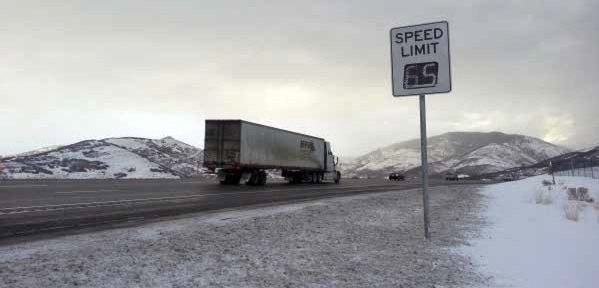The speed limit on the Trans-Canada Highway from Salmon Arm to Golden is being increased to 100 km/h, following a review by the B.C. government.
The move is part of an increase in speed limits on 35 sections of highway totalling about 1,300 kilometres across the province.
Transportation Minister Todd Stone said limits are being raised where traffic studies show the vast majority of traffic is already going faster than the posted limit.
Around Revelstoke, the speed limit on Highway 1 is being increased to 100 km/h from 90 km/h. The increase will affect 159 kilometres of highway in the region.
The speed limit from Sicamous to Malakwa, which is current 100 km/h, will be unchanged and the limit through Revelstoke and Sicamous will remain at 60 km/h.
Speed limits will be unchanged in Mount Revelstoke and Glacier National Parks.
According to a survey conducted by the ministry, 54 per cent felt the speed limit should be increased from Salmon Arm to Revelstoke and 61 per cent felt it should be increased from Revelstoke to Golden.
The same survey indicated that the majority of drivers found slow-moving vehicles a safety concern on the Trans-Canada, while wildlife was of little concern.
A driver study showed that 85 per cent of drivers travelled 103 km/h or slower on the Trans-Canada from Revelstoke to Golden. From Salmon Arm to Sicamous, the 85th percentile speed was 106 km/h.
The 85th percentile is the predominant factor in setting speed limits throughout North America.
There is no change to the speed limit on Highway 23, despite the fact 61 per cent of respondents felt it should be increased.
A pilot project will test variable speed limits depending on volume and weather conditions. Digital signs that can display different limits will be tested on a section of the Trans-Canada from the Perry River Bridge to the junction of Highway 23 near Revelstoke. Variable speed limits will also be tested on portions of the Coquihalla and Sea-to-Sky highways.
The pilot project will use sensors measuring weather, pavement conditions and traffic flow to adjust speed limits depending on conditions.
An average of 6,000 vehicles drive the stretch of highway from Salmon Arm to Revelstoke daily. An average of 5,400 vehicles ply the route from Revelstoke to Golden. About a quarter of all traffic on both stretches of highway are commercial trucks.
Speed limits are increasing around the province.
A new maximum speed of 120 km/h is being applied to the Coquihalla Highway from Hope to Kamloops, the Okanagan Connector (Highway 97C) from Aspen Grove to Peachland and Highway 19 from Parksville to Campbell River. The Coquihalla sections get new 120 km/h signs this week, and more changes will roll out this summer as sign crews put up new limits.
The Sea-to-Sky Highway gets an increase from 80 to 90 km/h from Horseshoe Bay to Squamish. Other increases are 80 to 100 km/h on Highway 3 from Manning Park West to Allison Pass, and 100 to 110 km/h on Highway 97C from Merritt to Aspen Grove.
In northern B.C., 52% of people taking part in public consultation did not support speed limit increases, and that region will not see changes. All other regions had support, the highest in the Lower Mainland at 81%.
RCMP opposed increasing speed limits on rural highways. ICBC representatives also expressed safety concerns, and will monitor areas with higher limits to see if the severity of crashes increases.
Ministry statistics show the number of serious crashes on provincial highways has decreased 28% since 2003, from a combination of improved vehicle technology, driver education and enforcement.
The ministry accepted recommendations from RCMP representatives to improve signs that encourage slower traffic to move to right lanes, and to clarify winter tire rules. The ministry is changing regulations to make tires with an "M&S" (mud and snow) symbol as well as those with a "mountain snowflake" (winter) symbol acceptable for roads requiring winter tires.
New designs for wildlife warning signs, including lighted signs for high incident areas, are being installed.
An updated sign reminding drivers to "Keep Right, Let Others Pass" is being installed, after people around the province expressed frustration about the slow vehicles in passing lanes.
With reporting from Tom Fletcher/Black Press
